Plymouth Central STW Stormwater UV Irradiation (2018)
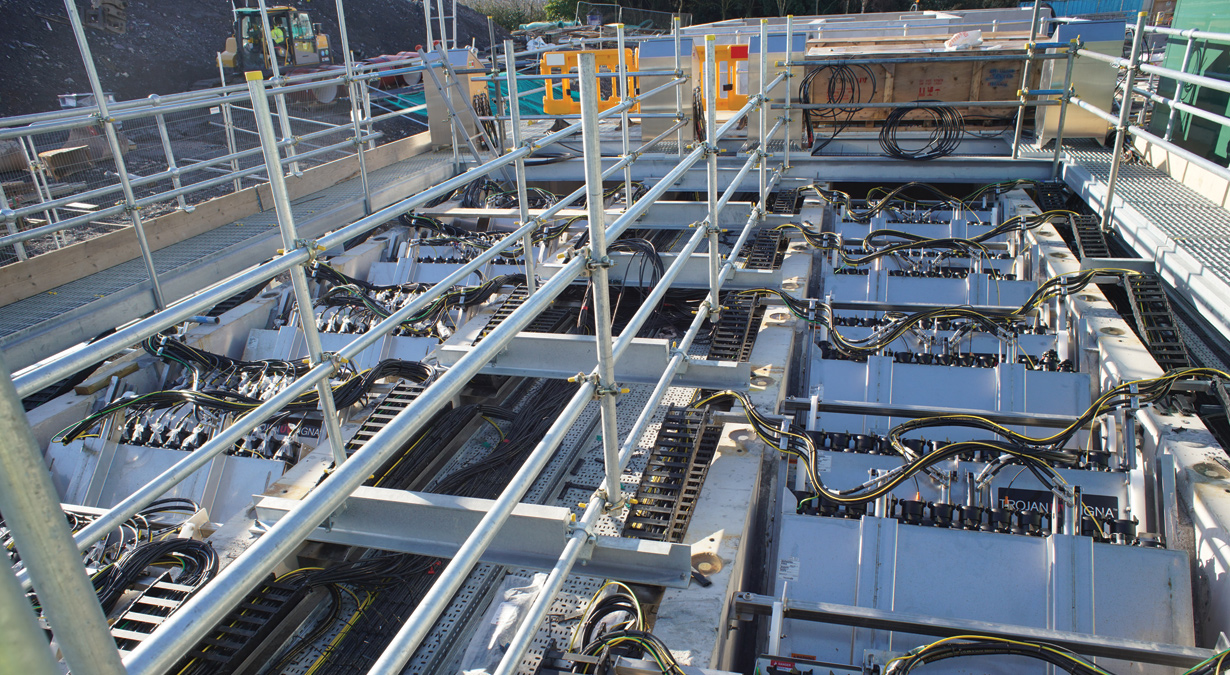
Trojan SignaTM UV stormwater irradiation system -10 bank, twin channel, 1,915l/s capacity in precast concrete structure at Central STW - Courtesy of SWW Delivery Alliance H5O
The European Union’s (EUs) revised Bathing Water Directive (rBWD) (2006/7/EC) came into force in March 2006 replacing Bathing Water Directive (BWD) (76/1160/EEC). The overall objective of the revised directive is the protection of public health. From November 2015, a new classification system for bathing waters (excellent, good, sufficient or poor) was introduced, with more stringent water quality standards and with an emphasis on providing information to the public. The Government’s target under the new Directive is ‘sufficient’, which requires higher quality than the old ‘good’ (mandatory) standard. South West Water’s (SWW) priority is to ensure all bathing waters meet this new standard.
Background
The latest phase 5 version of the National Environment Programme (NEP) asset list includes the requirement to improve sewerage network assets in Plymouth that impact on water quality at two designated bathing beaches, when combined sewer overflows (CSOs) discharge excess flow during storm conditions. The designated waters are located at Plymouth Hoe (West) and Plymouth Hoe (East).
Both beaches are small, approximately 150m wide, and mainly shingle which are primarily used by local people; with use throughout the year for bathing. Historic water quality has been ‘excellent’ in recent years however, inclusion in the NEP was due to the risk of deterioration to ‘poor’. The wet weather through the bathing season of 2012 saw water quality deteriorate significantly due to the nature of the catchment which, under the rBWD 4-year rolling average methodology for classification, has the potential to impact the classification of both designated waters.
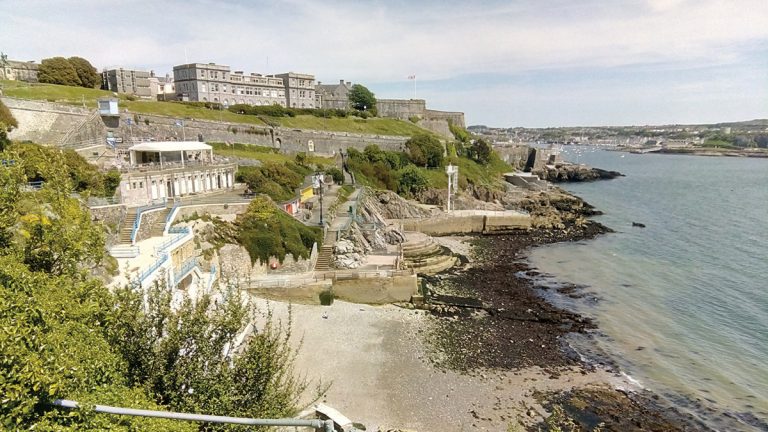
Plymouth Hoe (East) – Courtesy of SWW Delivery Alliance H5O
Plymouth catchment
Plymouth has a total resident population of approximately 250,000, with most of the city located between the River Tamar and the River Plym. The city is served by 5 (No.) sewage treatment plants, with Plymouth Central STW catchment being the primary focus for the Bathing Waters Improvement Project.
There are very few minor watercourses in the catchment area and the tidal creeks that once existed were in-filled in the post-war period as a means of disposing rubble and as a result there is little separation of surface runoff and foul flows in the drainage network. Consequently, a vast majority of the Plymouth Central STW catchment is only served by combined sewerage networks.
Where areas have been built with separate drainage systems (invariably with no local watercourse into which to discharge surface water) the flows are discharged into the combined sewers. The Plymouth Central STW catchment was constructed during the 1990s as part of South West Water’s ‘Clean Sweep’ programme of environmental improvement projects. The new STW for the Central catchment necessitated the reconfiguration of sewerage infrastructure, diverting sewage flows away from the historic crude outfalls to Plymouth Sound and towards the new STW. This was completed by a network of new tunnels that linked all the crude discharges and historic tunnels back to the new STW, located in the Cattedown area of the city.
Given the historic ‘excellent’ performance of the bathing waters and the relatively low usage of the bathing beaches, the need to understand the linkage between CSO discharges and water quality was essential to ensure investment was directed to improve water quality in the most effective way.
Plymouth Sound, the River Tamar, the Cattewater and River Plym areas were only present in the hydrodynamic model held by HR Wallingford. This model has been used for a number of purposes including assessment of the water quality of the River Plym as part of an EC Habitats Directive project for the EA. The model uses a flexible mesh with a resolution that varies spatially depending upon the level of detail required. The model was calibrated against survey data collected in 1999 at the mouth of the Cattewater and against admiralty diamonds in Plymouth Sound. The extent of the Cattewater hydrodynamic model is indicated in Figure 1.
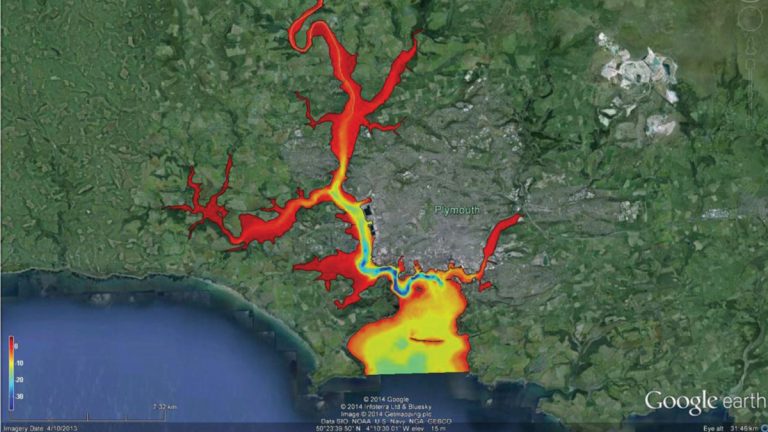
Figure 1: Extent of hydrodynamic model – Courtesy of HR Wallingford
In order to target investment at the locations most likely to generate improvements, the initial phase of hydro-dynamic modelling focussed on establishing the relative impacts of CSO discharges on water quality. This was followed in Phase 2 by a qualitative assessment of the proposed options was undertaken to optimise investment.
The analysis of CSO impacts was undertaken using a selection of predicted CSO discharge hydro-graphs across 10 rainfall events from the 10-year Plymouth bathing water rainfall time series. The largest 10 events were used initially under spring and neap tide conditions with CSO discharges set to commence at either 1 hour before high tide or 1 hour after high tide.
Full analysis was undertaken for all 40 event and tidal scenarios and an indicative snapshot showing the general plume behaviour is shown in Figure 2.
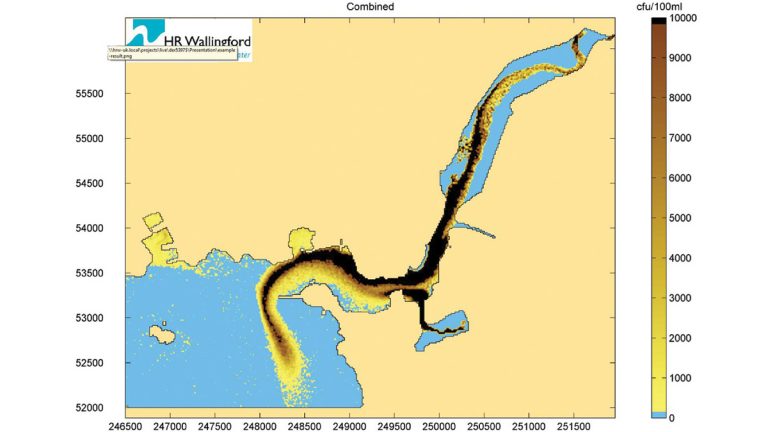
Figure 2: Predicted CSO discharge plume – Courtesy of HR Wallingford
The relative impacts of each CSO discharge were assessed and those assets most likely to lead to failures at the bathing water locations were highlighted. This analysis showed that for the events selected, the discharge from Plymouth Central STW CSO contributed between 60-90% of the impact above the ‘sufficient’ failure threshold under the worst case tidal and discharge timing scenario. In addition, this analysis indicated that up to 95% of the total impact was attributable to just three assets (Central STW CSO, Eastern Kings SPS and Cattedown Road SPS).
This analysis was then extended to establish a comparison between the predicted water quality of a conventional 3 spills per bathing season storage solution and various other approaches that included reduction in the microbiological load in the storm discharges from Central CSO.
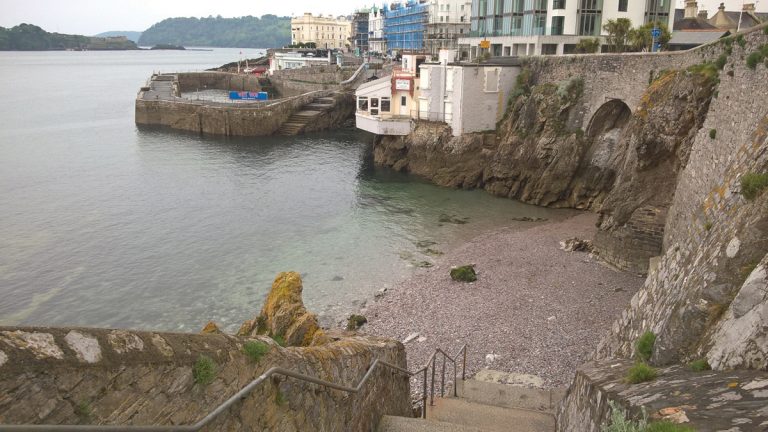
Plymouth Hoe (West) – Courtesy of SWW Delivery Alliance H5O
Final scheme approach
The optimised approach included improvements to meet the 3 spills per bathing season standard at Cattedown Road/Conoco Wharf SPS and at Eastern Kings SPS. Both of these assets were determined by the hydrodynamic model to have the potential to impact water quality at the bathing waters. Conventional storage was proposed for Eastern Kings whilst Conoco Wharf SPS was found to receive significant flows from connected impermeable surfaces in the industrial area of Cattedown which lead to 5.5ha of surface water separation.
A major part of the final scheme is direct treatment of the stormwater discharges from Plymouth Central to reduce the microbiological load discharged to the Cattewater. This is in place of a conventional solution that would have required approximately 60,000m3 of additional storage at the works at a total cost of over £50m with the associated difficulty in treating this additional volume in a reasonable time. Alternatively, it is estimated that it would have been necessary to increase flows to the WwTW by a factor of four to accommodate the spill flows. As the site is bordered by quarry walls and close proximity to the river and major roads, expansion beyond the existing site boundary was not possible. Furthermore, expansion of treatment capacity, even using the high rate processes already employed on site rather than conventional processes, was also impractical.
The hydrodynamic model predictions demonstrated the relative ‘enhancement’ afforded by the prioritised investment over the conventional storage approach. This analysis then lead to SWW promoting a case to the Environment Agency that additional benefit to water quality could be realised by enhanced solutions at these identified assets in lieu of work at sites with very low water quality impact. This was accepted by the EA and DEFRA which lead to an alteration to the AMP6 NEP to reflect the ‘enhanced’ solution.
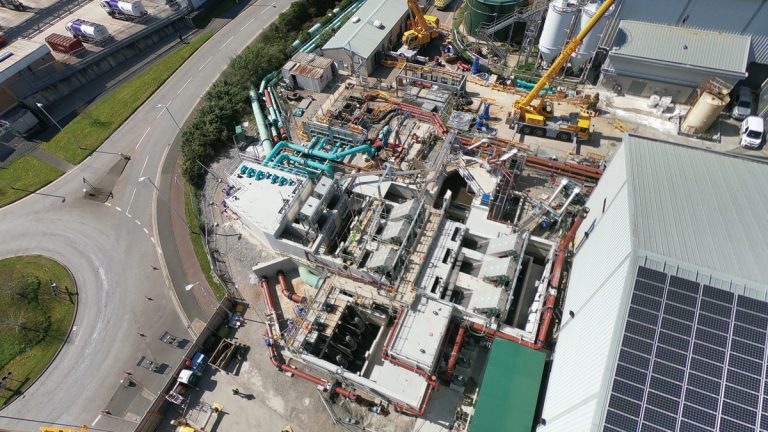
Aerial view of new inlet works and fine screening plant – Courtesy of SWW Delivery Alliance H5O
Stormwater disinfection
In order to achieve the target bathing water quality required the model threshold was set to 500 colonies/100ml as 95% percentile, the hydrodynamic models indicated that approximately 2 log reduction in the concentration of faecal indicator organisms (E. coli and intestinal enterococci) in the discharge from the Plymouth Central CSO would be required. Since this level of reduction cannot be achieved through enhanced or conventional settlement, disinfection would be required or all flows discharged to the Cattewater.
Using the spill volume figures from the 1D hydraulic model in conjunction with observed concentrations of FIOs for the untreated and disinfected discharges, taken from the site survey work, it was estimated that achieving the target level of disinfection of all the storm tank overflows would be expected to reduce the total microbiological load discharged to the receiving water by approximately 98%.
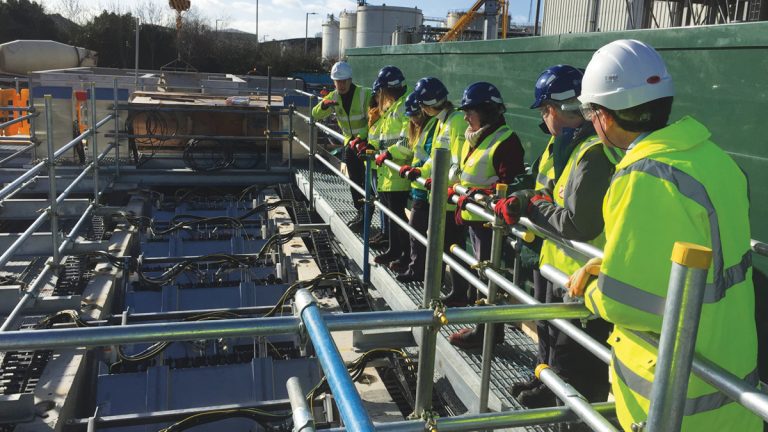
Local EA construction site visit – Courtesy of SWW Delivery Alliance H5O
UV irradiation is one of the primary method of disinfection for wastewater discharges accepted by the Environment Agency (the other being membrane treatment). Disinfection of stormwater discharges is relatively new within the UK with seven full scale applications on settled stormwater now in operation. This approach has been introduced as a potential alternative solution in cases where provision of additional storage is not viable.
It is important to note that the Environment Agency has emphasised that disinfection of stormwater discharges cannot be considered a long term substitute for an adequate network, under the EU Urban Wastewater Treatment Directive (UWWTD). This is being addressed by SWW as part of a wider, long-term project being informed by a collaborative Integrated Urban Drainage Management (IUDM) project with SWW, EA and Plymouth City Council as lead local flood authority (LLFA).
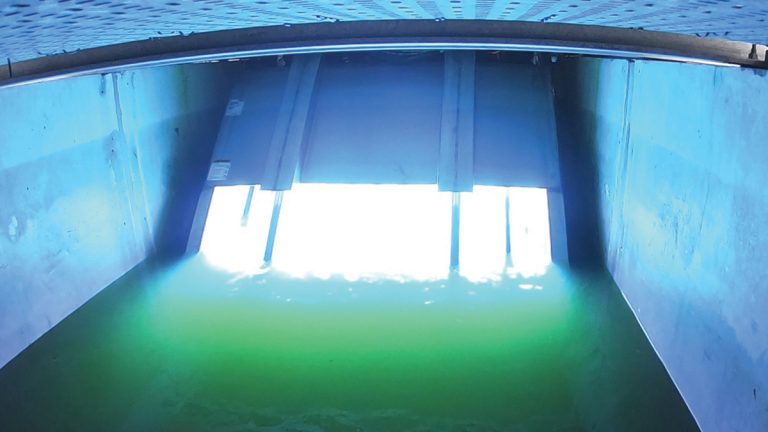
Operational UV plant during commissioning – Courtesy of SWW Delivery Alliance H5O
Stantec UK has been involved in the majority of the previous stormwater disinfection projects in the UK, as well as directly working with the EA to develop their new approach to wastewater disinfection based on the use of biodosimetry and validated UV irradiation equipment. In order to benefit from this expertise and experience, SWW employed Stantec to plan and manage an extensive programme of assessment work that they then used to determine the key information for design and specification of the disinfection process and assessment of the specialist supplier equipment.
Unlike the stormwater disinfection solutions already in operation, the stormwater spills from Plymouth Central are unsettled and contain higher and more variable levels of suspended solids.
A programme of intensive sampling was carried out on a total of ten storm discharges over approximately 15-months by Titan Environmental Surveys, in addition to online monitoring over the period. Specialist sampling equipment with remote triggers was used to ensure that the variation in the characteristics of the stormwater discharges over the various spill periods could be understood for design critical variables (microbial content, UV transmittance, suspended solids and various other parameters).
The surveys also included a number of samples taken for collimated beam testing which was used to:
- Demonstrate that UV irradiation would be capable of disinfecting the stormwater discharges to the desired level, based on the observed ranges of concentration of suspended solids and UV transmittance).
- Develop dose-response relationships for the target microorganisms (E. coli and intestinal enterococci), which were used to establish the key design parameters for the UV irradiation system, including the target UV dose required to achieve the required discharge concentrations.
Following a formal tender process, the SignaTM vertical lamp UV irradiation system from Trojan Technologies was selected. The flow is split equally between two parallel channels each containing 10 banks of SoloTM lamps. The system has been sized to deliver the target UV dose at maximum instantaneous flow rate of 1,915l/s and at a minimum design UV transmittance of 15%.
Plymouth Central STW Stormwater UV Irradiation Plant: Table of Designers, Contractors and Suppliers
- Client: South West Water
- Wastewater characterisation and UV plant specification: Stantec
- H5O – Civil Design and 1D hydraulic modelling: Pell Frischmann
- H5O – 1D hydraulic modelling: Arcadis
- Coastal hydrodynamic modelling: HR Wallingford
- STW influent sampling: Titan Environmental Surveys
- H5O – Principal contractor: Interserve
- UV equipment supplier: Trojan Technologies
Delivery
The construction of the UV irradiation system, associated structures, pipelines and control systems was undertaken alongside a major capital maintenance project to increase the resilience of the main inlet works pumping station shaft and inlet works screens. During the final stages of the construction phase, SWW invited local EA officers to site to demonstrate the scale, complexity and progress of the Central CSO works along with the other improvement measures that make up the Plymouth Bathing Waters project. This invitation was well received by the EA and provided an ideal opportunity to familiarise themselves with the scheme in advance of discussions over the details required by the permit.
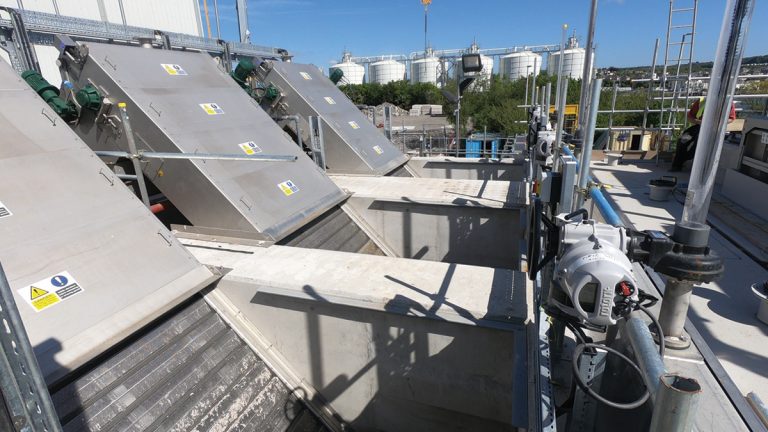
Inlet works 3mm fine screens – Courtesy of SWW Delivery Alliance H5O
The UV irradiation system and associated works were operational in time for the NEP compliance date of 31 March 2018, providing stormwater disinfection for a majority of the CSO discharges for Plymouth in advance of the 2018 bathing season. It is anticipated that these works, reducing the annual microbiological load to the Cattewater and Plymouth Sound from Central STW CSO by 98%, and the provision of the other measures in Plymouth will secure ‘excellent’ water quality at the Plymouth East and West Hoe bathing beaches for years to come and support Plymouth’s status as ‘Britain’s Ocean City’.











